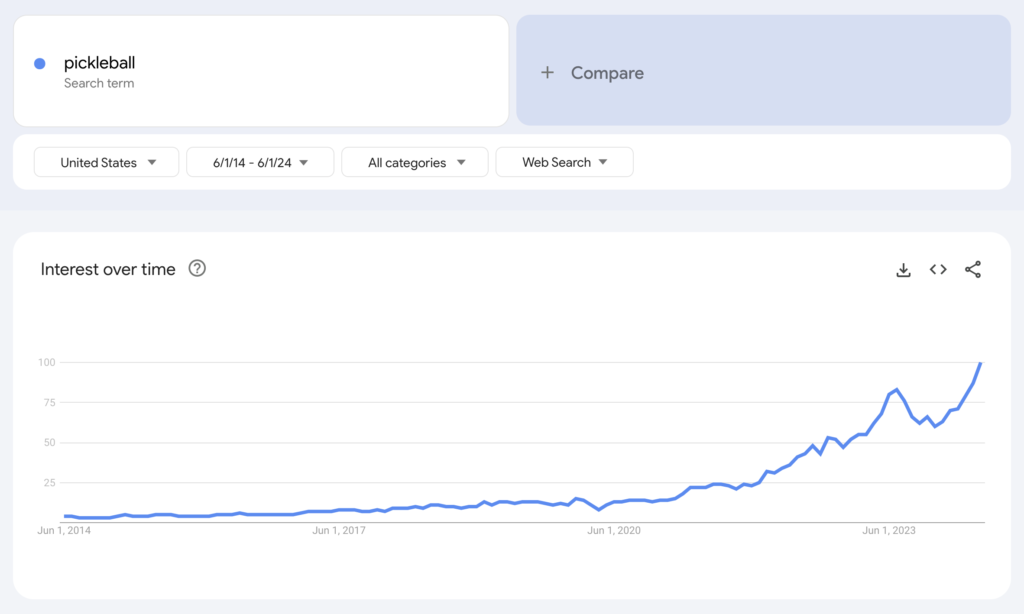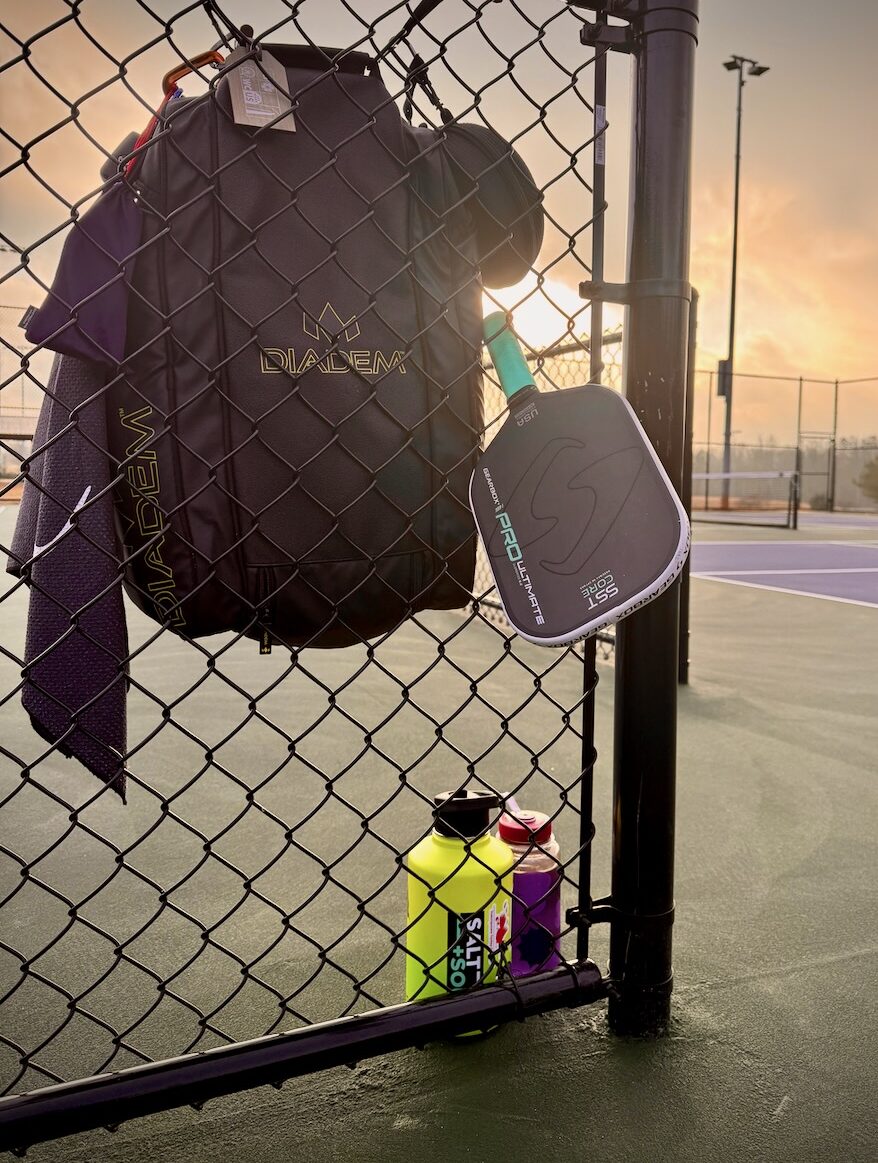When I first picked up a pickleball paddle in 2021, all I knew about it came from friends and the internet. Back in 2021, the sport didn’t have the country in the chokehold it does today. Despite its historically low profile, all of the stereotypes rang true in my mind: Isn’t that a silly game for retired geriatrics? It’s not an athletic sport! And it certainly wouldn’t be any fun… right? Right?
The Rising Popularity of Pickleball and The Evolution of the Game

Boy, was I wrong. And I certainly didn’t expect it to hook me the way it did. The sport has changed dramatically since its rise in popularity just in a few short years. Today the sport is played by a greater variety of demographics; it’s faster, more competitive, and more exciting than ever.
This is partly due to improved paddle and ball technology, but it’s also an inevitable adaptation of athletic playing style and the human pursuit of peak performance: Faster + Stronger = Better!
Mental Resilience Reigns Supreme
But accomplishment on the court is not dominated by speed and power. It’s much more dimensional than that. At its core, pickleball is a game of nuance and variety. The heart of any racquet sport is precision, strategy, and adaptability. The soft game, the ability to read your opponent’s positioning, and the mastery of placement over raw strength all come together to create a dynamic and layered experience. It’s not just about who can hit the hardest or fastest; it’s about making smart decisions, controlling the pace, and adjusting to the ever-changing rhythm of the match. Most of all, mental resilience—the ability to reset after a mistake.
Mistakes are unavoidable in every sport. The key isn’t in eliminating them, but in the ability to reset quickly after they happen.
My early days were full of mishits, smashes into the net, and the frustrating habit of trying to speed up every ball. I didn’t understand the idea of point construction. I forced every shot, attempting to win the point with every ball I hit. I certainly didn’t have an inkling about partner strategy or communication.
I was impatient.
But I was determined.
The path from 3.0 to 3.5 wasn’t a straight line. It was a mix of humbling experiences, small victories, and a helluva lot of repetition. Today, I want to share what got me here — and how I’m working to take my game even further.
The Early Struggles: Consistency and Control
In the beginning, consistency was my biggest challenge. I would string together a few good shots only to lose momentum with unforced errors. The mistakes would pile up quickly, and before I knew it, my partner and I would be down by multiple points and counting. I lost count of the shutouts. It didn’t matter how good my partner was. I would always find a way to screw up the point and lose the match for both of us.
It was devastating.
If I wanted to keep playing this game, I needed to get better. So I focused on mastering the soft game — dinks and drop shots — which forced me to slow things down. Drilling these skills was tedious at first, but it gave me more control over rallies. Developing touch and feel transformed how I approached each shot, and it’s what moved me solidly into the 3.5 category.
Lessons That Made the Biggest Difference
Here’s what I believe had the greatest impact on my skill level:
1. Learning Patience & Positioning at the Kitchen Line
Patience in the point doesn’t come naturally. I tried to win from anywhere BUT the kitchen line. Once I committed to winning “at the line“, and softening my play, my consistency improved. I began to see the value of waiting for the right opportunity rather than forcing the point.
2. Footwork, Footwork, Footwork
Good footwork is underrated. I started focusing on my positioning, making sure I was balanced before hitting shots. Moving into the correct spot instead of reaching was a game-changer for both my power and accuracy.
3. Better Court Awareness
Pickleball isn’t just about hitting the ball; it’s about strategy. I worked on recognizing patterns, anticipating my opponents’ moves, and playing smarter rather than harder. It’s amazing how much difference a simple adjustment in placement can make.
4. Embracing Drill Work
I won’t lie — like most players, I enjoy games more than drills. But drilling serves, returns, drops, and dinks gave me the muscle memory I needed to get out of my head and play more confidently. I learned that practice without pressure is essential if you want to improve.
What I’m Working on Now
While I feel confident in my skill level as a 3.5+ player, I’m far from satisfied. Here’s where my focus is as I improve to 4.0+:
• Speed and Reaction Time
At 4.0, points move faster, and players hit harder. I’m working on reacting quicker at the net, especially in fast-paced hand battles. Speed-up and reset drills are a consistent part of my routine now.
• Doubles Strategy
If you’ve ever been matched with an unequally skilled partner (who hasn’t?), you understand partnership strategy can win or lose the match. Communication with a partner is key to winning at this level. I’m studying positioning, court coverage, and shot selection to play smarter doubles.
• Mental Toughness
Pickleball is a mental game as much as a physical one. Staying calm under pressure and staying positive after mistakes are skills I’m actively developing. It’s a work in progress, but it makes a big difference. This is where I see the greatest area for improvement.
The Journey Ahead
Pickleball has been an incredible teacher. It’s shown me how to be patient, how to adapt to things out of my control, think strategically, and keep pushing my limits. As I work toward 4.0, I’m reminded that improvement comes from consistent effort, a willingness to learn, and, of course, a love of the game.
Helpful Resources
• What is Pickleball and How Do You Play?
If you’re curious and want to get started with the game of Pickleball, check out these resources on UpstatePickleball.com.
• What is a Pickleball Skill Rating?
If you play Pickleball but don’t understand the skill rating system, here’s a great guide on how to self-rate your skill level.
• How To Find People To Play With?
If you are an introvert like me and don’t go to the courts with a consistent group of friends, then finding players can be difficult. Check out social media, specifically groups on Facebook. Most local communities use a combination of social media and mobile apps for coordinating play and communication. In my region of the Upstate of South Carolina, we use a Facebook group (currently 9k members and growing) and most parks are on the TeamReach app.
Wherever you are in your pickleball journey, I hope my story reminds you that progress is possible with the right mindset. Be adaptable, stay coachable, and never stop drilling.
Let’s awaken the fire within. ❤️🔥

Leave a Reply